The final event in the unique, year-long collaboration that the University of California Botanical Garden at Berkeley undertook with “artists, architects, scientists and poets in the garden,” Natural Discourse, was held Friday, January 11, 2013. As co-curator Shirley Watts explained at the beginning, “This is my dream symposium. So I just said, Who do I want to hear?”
What we heard was an extraordinary series of lectures, a “natural discourse” that drew from the disciplines of anthropology, art, botany, design, science, politics, engineering, including: The transformation of a sheep ranch in Sonoma County into a world-class, Richard Serra-containing, outdoor art installation (I must see this some day*); the inception of the International Garden Festival at Chaumont sur Loire (I must visit this some day); the making of The Ethnobotanical Garden of Oaxaca, Mexico (I MUST go here some day); the role of cellular structure, its actual physical shape, in furthering understanding of stem cell biology (I may benefit from this some day). And, of course, the juicy back story behind the creation of and ensuing national controversy surrounding one of the Natural Discourse exhibits, SOL Grotto, which utilized the discarded cylindrical tubes from the bankrupt solar cell manufacturing company Solyndra (written about previously here.) My magpie brain happily gorged on the lectures, and I was able to dart into the garden, hummingbird-like, when opportunities presented. A dream symposium indeed.
In between lectures, the garden, which hasn’t experienced a frost yet, was ours to explore, so I’m interspersing some of the photos I took during the short breaks and lunch. I didn’t explore too far beyond the conference area. The one time I did, I was late for a lecture. Shades of college all over again.
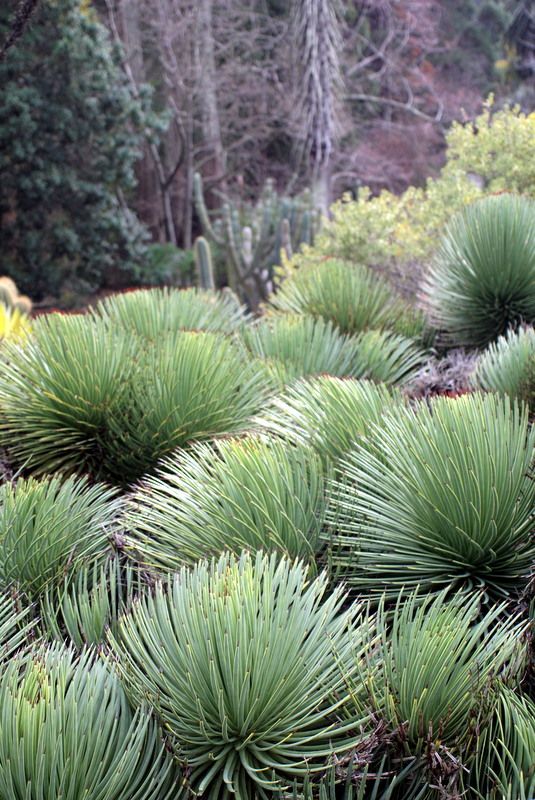
Agave stricta
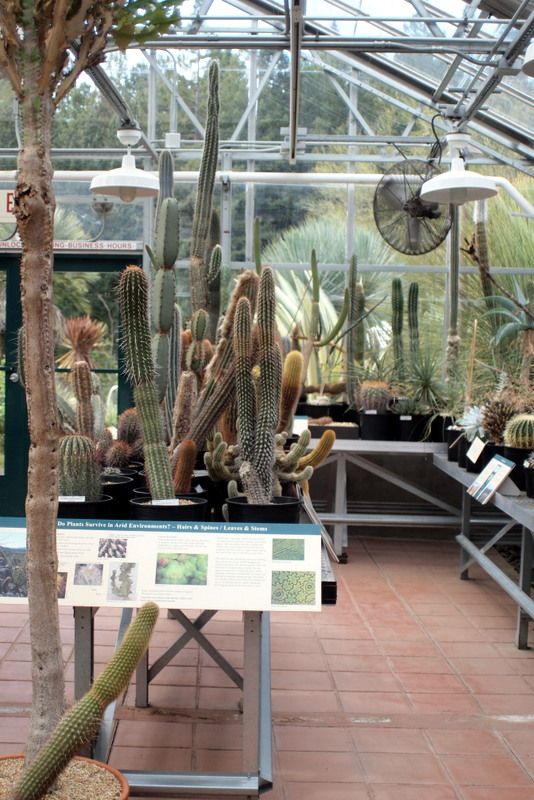
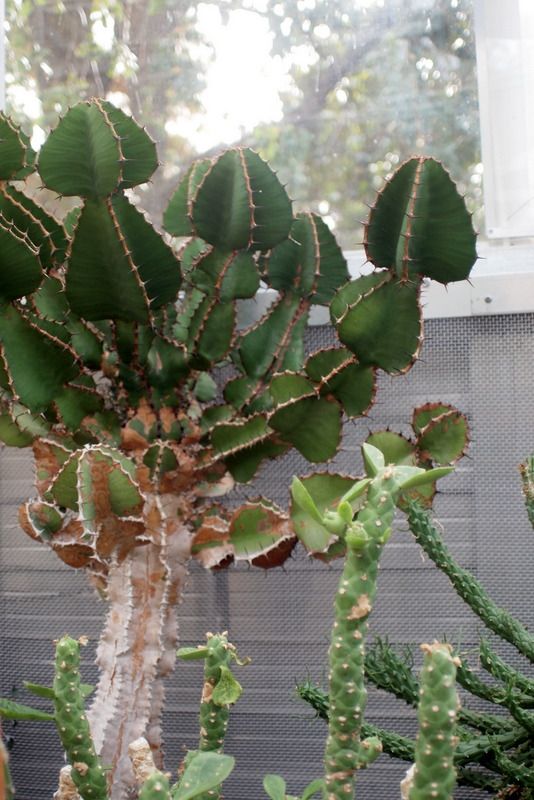
Euphorbia cooperi var. cooperi, South Africa
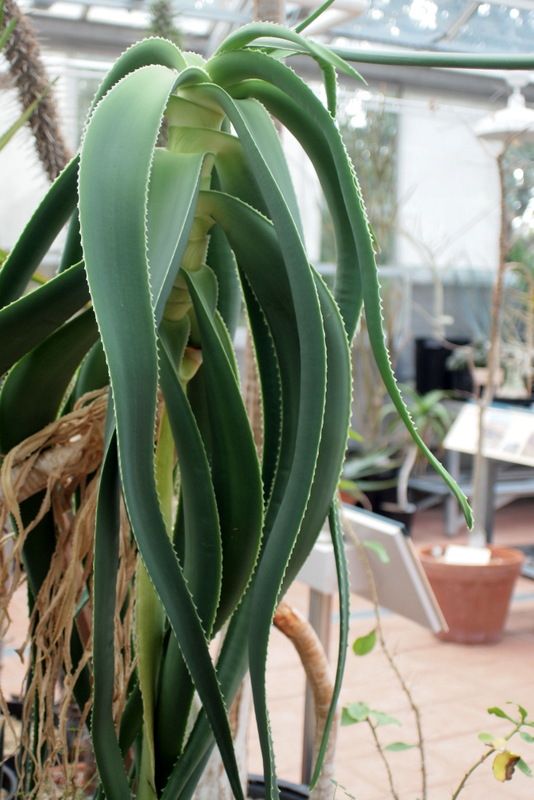
Aloe sabaea, Yemen
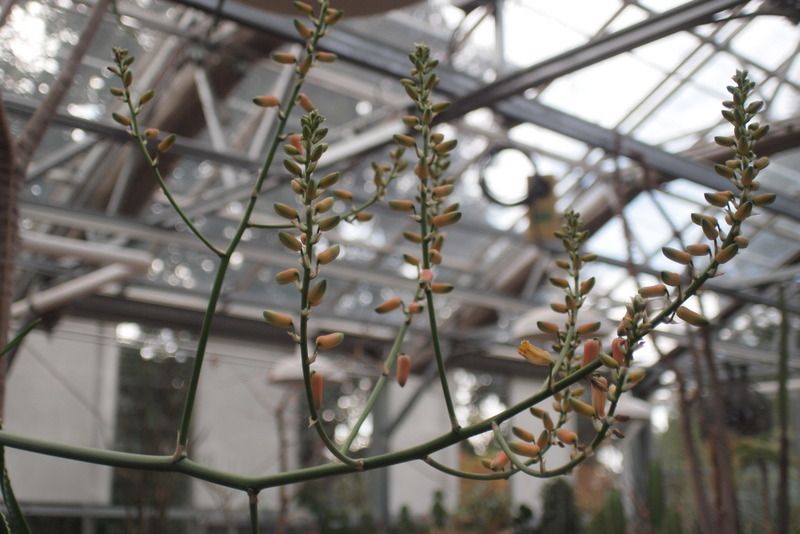
Bloom of Aloe sabaea
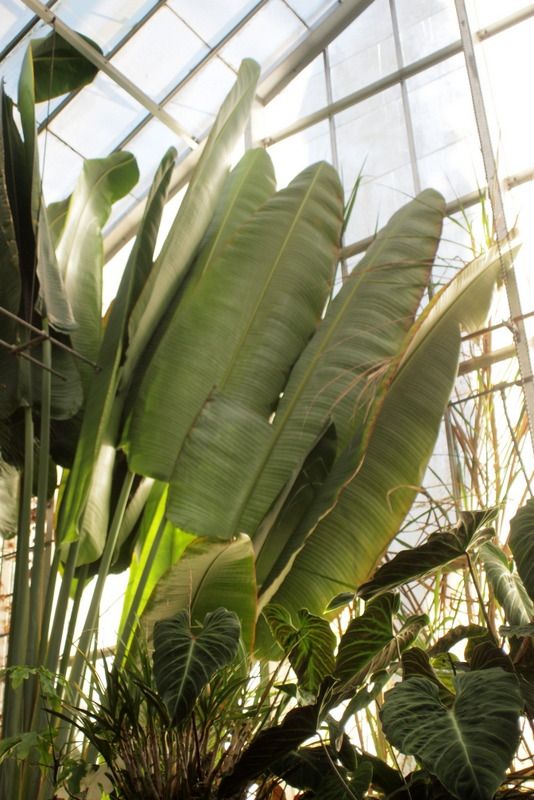
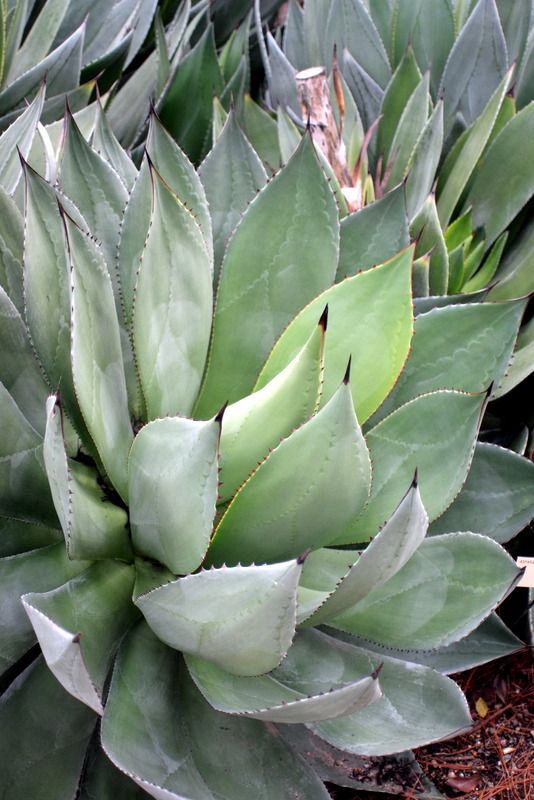
Agave species, Mexico
Depending on sound quality, I have ambitious plans to produce transcripts of most of the lectures — they are simply too wonderful not to share — but there may be unforeseen technical challenges ahead. For now, below are the opening remarks by Paul Licht, Director, UCBG:
“It’s a pleasure to see this many people interested in what I think are very important parts of our lives. I’m Paul Licht. I’m the director of the garden, and so I get the great pleasure of opening what’s going to be an exciting day.
“And I’m not supposed to say this, but if you get a little tired of sitting, there’s a lot of other things to see out here. In fact, there are 34 acres. We describe it as 34 glorious acres, which houses one of the biggest, most diverse plant collections in North America, and it’s unequaled in many ways.
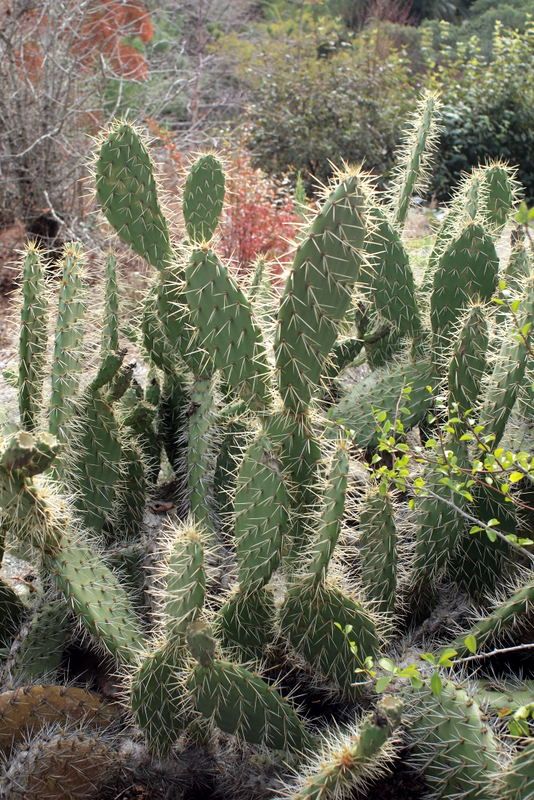
Opuntia aff. prolifera, Beavertail cactus (note searchable database)
“I’m not going to give you the whole spiel, but you’re in a very special place for many things, one of which you’re going to hear about the rest of the day. But just to orient you, it is a 34-acre garden. It’s part of the University of California, but we are one of the few really public entities of the University of California. There are other museums, but they are not public. They are mostly research. We have a plant collection that’s unequaled not only in its diversity, that is, the number of different kinds of plants — we have roughly 12 thousand different kinds of plants growing here. They are from all over the world. But they are unusual in that they are almost all wild collected, and no other garden has this kind of collection. And it’s hard for people to believe that right here in this little town of Berkeley we have this incredible resource. That’s what it’s supposed to be, a resource for you. It’s a public garden. It’s your garden as much as anyone’s.
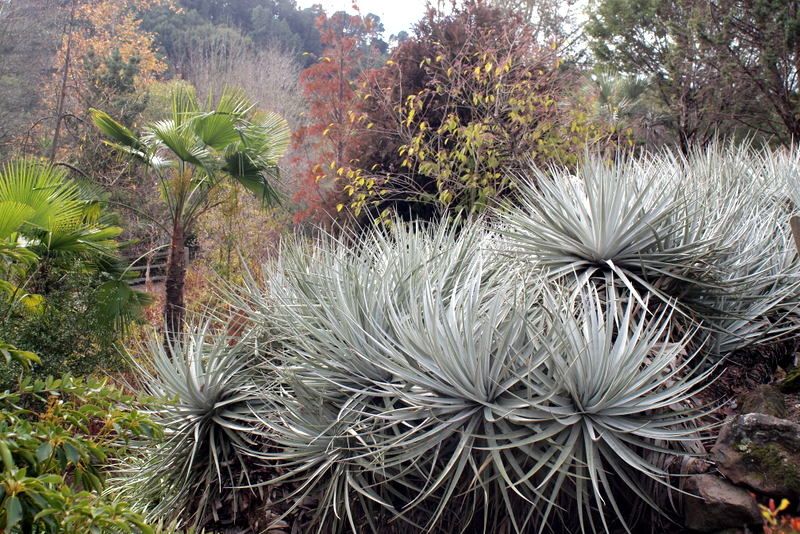
Puya venusta, Chile
“What we’ve tried to do over the past few years is to make people more appreciative or better able to discover the garden by appealing to a lot of different senses that I think should be part of the garden, and one of them is art. Art and music, I think, go together. Now, I’m very much of the belief that if you did nothing in this garden, it is still a piece of art. It’s an artwork. Any landscaper, any gardener, will tell you that no matter what it looks like, whether it’s just a bunch of flowers or very natural looking, it’s artificial. It’s created by people, landscapers and gardeners and people who love these living things. So I would argue that it’s all a piece of art that you’re sitting in the middle of right now. Everything is intentional. Well, not everything. We do have some weeds. But most of what you see here has been done intentionally. And if it doesn’t look like a formal garden to you, that you’re used to, like rows of beautiful plants, that’s intentional. We’ve tried to recreate nature in the middle of nature. But we’ve created it in the way that we think sends out a message.
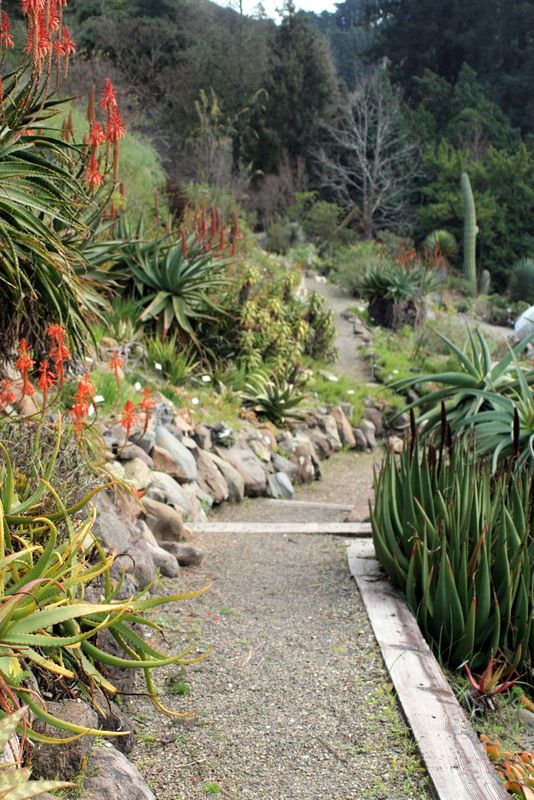

Aloe capitata
“So we started from the point of view that we think we have a lot to offer to the art world, and then we began to explore more — I won’t say traditional, but things that I understood better. Simple things, like botanical illustration, was clearly related to the garden. So next week in this room, next Saturday, is the opening of a botanical illustration exhibit, where we’ll have a whole group of several dozen botanical illustrators that have worked here, displaying their things.
“And then when I thought I sort of had it all under control. Mary Anne Friel and Shirley Watts came with another idea, which kind of stretched my imagination a little bit. What they put together was an exhibit they called Natural Discourse. And to this day, it is so rich and varied that when people ask me what is it, it takes a long time for me to sort of articulate it. And I think it’s much better done by seeing it than talking about it. So I hope in the course of this talk you’ll have the opportunity to get out and really experience it firsthand. And if it’s brought in people who haven’t been to the garden before, then it really succeeded because that’s the whole goal of it.
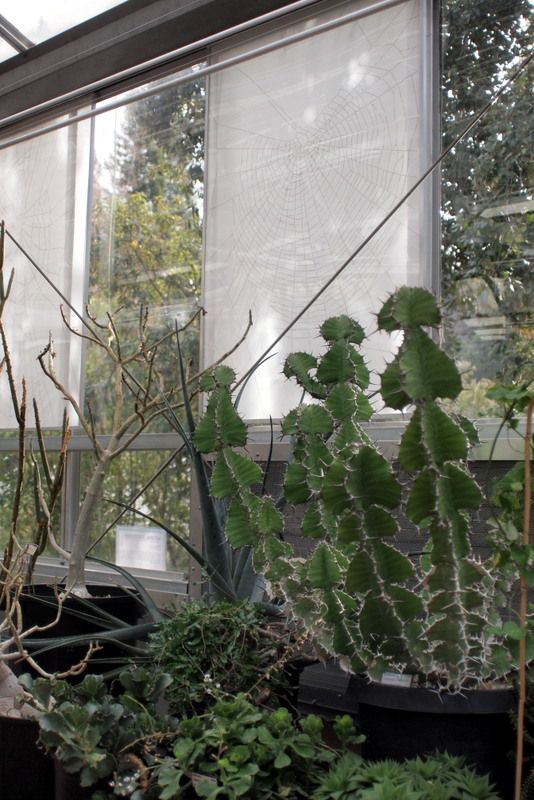
Euphorbia grandialata, South Africa
(window shade coverings, very faint in this photo, are vellum-burned “spiderwebs” by Gail Wight, exhibit entitled “Under the Influence,” inspired by 1960 experiments of feeding psychotropic drugs to spiders.)
“And it’s very different from the traditional artwork in that it is very much part of the garden, an extension of the garden. The artists who created these pieces did a wonderful job of extending the garden into their artwork, and that’s I think what makes it so very, very special. A lot of these pieces might not look as exciting if they were just plunked in the middle of the MOMA or the DeYoung or something. They would look interesting, but they wouldn’t have the same meaning. And that’s what I hope you’ll all get out of this, that art can be just a transition into the garden. It doesn’t have to be a separate thing…So I hope that you’ll find this as exciting as I do. And I hope that it will present a doorway for you to get out into the garden and enjoy the art that’s part of the garden.”
List of speakers:
Dr. Paul Licht, Director, UC Botanical Garden, Welcome
Shirley Watts, Natural Discourse co-curator, Introduction to Symposium
Mary Ann Friel, Natural Discourse co-curator, Overview of exhibition
Ronald Rael, “Material Provenance” (SOL Grotto)
Steven Oliver, “Art That Ceases to be a Commodity”
Gerard Dosba, The International Garden Festival at Chaumont sur Loire
Dr. Marie Csete, “Structure and Function in Stem Cell Biology,” Division Director, AABB Center for Cellular Therapies, Bethesda, MD
Dr. Alejandro de Avila, “Blood on a Fountain,” founding director of The Ethnobotanical Garden of Oaxaca
*Visits to the Oliver Ranch are arranged only through membership in non-profit organizations. For example, the UCBG is arranging a visit for its members in 2014.

Absolutely stunnig! Thank you for sharing this treasure with us along with Mr. Licht’s remarks!
Transcripts of most of the lectures? Wow you’re amazing Denise…I’m praying for no technical difficulties. Hopefully there are more pictures too? (I know, greedy aren’t I?)